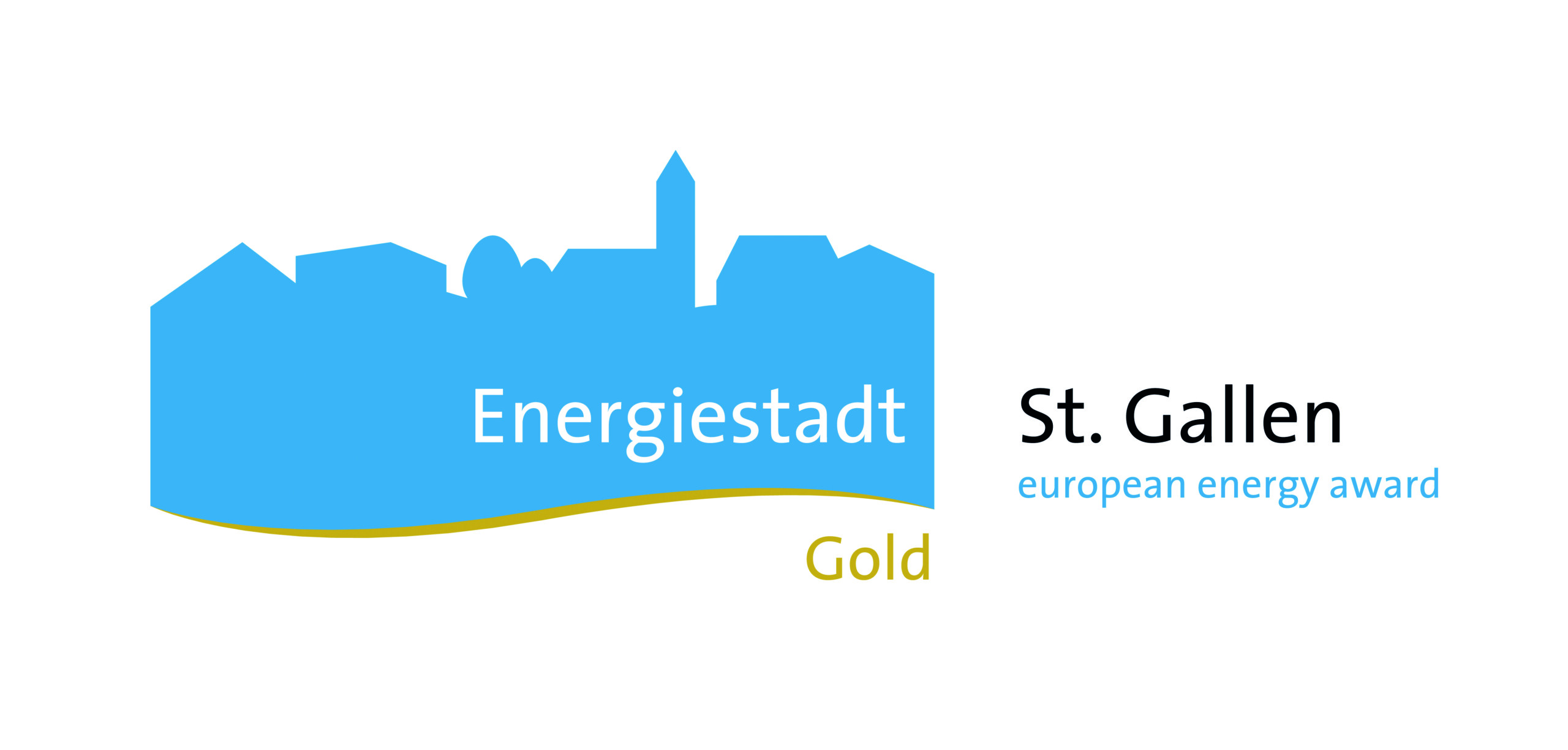How the climate is changing
over time and what you can
do about it…
<1868
+ 0.22°C
1824: Discovery of the greenhouse effect
Joseph Fourier discovered the greenhouse effect in 1824. The greenhouse effect is responsible for keeping our planet warm and habitable. At the same time, it is also a fundamental mechanism in climate change. The effect works by allowing solar radiation to fall on the Earth’s surface and be diffusely reflected from there into the atmosphere. In the process, part of the thermal radiation is retained by the greenhouse gases in the atmosphere, while the rest escapes into space. This means that the more such greenhouse gases there are in the atmosphere, the more thermal radiation is retained, which consequently leads to a warming of the earth’s surface.
The most important greenhouse gases include carbon dioxide (CO2) and methane (CH4). To counteract further warming, not only must new emissions be prevented, but existing ones must also be filtered out of the air.
1869
– 0.55°C
1870
– 1.22°C
1871
– 1.50°C
1872
+ 0.10°C
1873
– 0.17°C
1874
– 0.78°C
1875
– 0.73°C
1876
– 0.35°C
1877
– 0.51°C
1878
– 1.05°C
1879
– 1.73°C
1880
– 0.08°C
1881
– 0.58°C
1882
– 0.50°C
1883
– 1.12°C
1884
– 0.37°C
1885
– 0.48°C
1886
– 0.61°C
1887
– 1.62°C
1888
– 1.34°C
1889
– 1.55°C
1890
– 1.43°C
1891
– 1.33°C
1892
– 0.64°C
1893
– 0.31°C
1894
– 0.56°C
1895
– 0.90°C
1896
– 1.27°C
1897
– 0.12°C
1898
+ 0.16°C
1899
+ 0.04°C
1900
– 0.07°C
1901
– 1.17°C
1902
– 0.74°C
1903
– 0.67°C
1904
+ 0.01°C
1905
– 1.00°C
1906
– 0.68°C
1907
– 0.66°C
1908
– 0.80°C
1909
– 1.37°C
1910
– 0.90°C
1911
+ 0.27°C
1912
– 0.81°C
1913
– 0.26°C
1914
– 0.64°C
1915
– 0.81°C
1916
– 0.45°C
1917
– 1.28°C
1918
– 0.25°C
1919
– 1.22°C
1920
+ 0.49°C
1921
+ 0.65°C
1922
– 0.89°C
1923
– 0.17°C
1924
– 0.51°C
1925
– 0.55°C
1926
+ 0.16°C
1927
– 0.07°C
1928
+ 0.28°C
1929
– 0.46°C
1930
+ 0.33°C
1931
– 0.87°C
1932
– 0.31°C
1933
– 0.75°C
1934
+ 0.55°C
1935
– 0.55°C
1936
– 0.18°C
1937
– 0.01°C
1938
– 0.17°C
1938: First evidence of global temperature rise
Meteorologist and climate scientist Guy Callendar first discovered the link between the rise in CO2 in the atmosphere and global warming in 1938. However, the published document received little attention at the time.
Compared to the pre-industrial average of 1850–1900, global temperature has already risen by more than 1.1 °C by 2020. How disproportionately the temperature has increased since the beginning of the new century can also be seen in the graph. In particular, temperatures from 2011 to 2020 exceed those of the most recent warm period several centuries ago (about 6500 years ago). In Switzerland, the increase is even more than twice as high at 2.5 °C.
Source: American Institute of Physics (2017), MeteoSchweiz (o.D.), IPCC (2021)
1939
– 0.54°C
1940
– 1.12°C
1941
– 1.03°C
1942
– 0.27°C
1943
+ 0.68°C
1944
– 0.63°C
1945
+ 0.33°C
1946
+ 0.16°C
1947
+ 1.04°C
1948
+ 0.70°C
1949
+ 0.85°C
1950
+ 0.45°C
1951
+ 0.14°C
1952
– 0.15°C
1953
+ 0.32°C
1954
– 0.54°C
1954: Invention of the solar panel
In 1954, Chapin, Fuller and Pearson created the first practically applicable solar cell. Since then, the invention of solar panels has spread rapidly around the world.
In Switzerland, a fundamental transformation of the energy system is planned. Nuclear power plants will be shut down by 2050 and gasoline cars will be replaced by electric vehicles. Consequently, the demand for electricity will increase significantly. Therefore, the federal government plans to increase Switzerland’s nationwide solar power production tenfold, to 34 terawatt hours per year.
At the end of 2022, the installed PV capacity in the city of St.Gallen was approximately 25 MWp, which corresponds to an increase of 4.3 MWp compared to 2021. This results in an annual production of 25’000 MWh, which can supply approximately 6’500 households with solar power.
1955
– 0.39°C
1956
– 1.48°C
1957
+ 0.22°C
1958
+ 0.08°C
1958: Proof of CO2 increase in the atmosphere
In 1958, Charles David Keeling proved for the first time that the CO2 concentration in the atmosphere is increasing worldwide due to human activities.
Since pre-industrial times, the CO2 concentration in the atmosphere has increased from 287ppm (parts per million) in 1750 to over 415ppm in 2022. A CO2 concentration above 400ppm has not been observed on our planet for several million years. The CO2 concentration has increased from 390ppm to almost 420ppm within 10 years. This steep increase is unprecedented in our Earth’s history.
In the city of St.Gallen, the main sources of CO2 emissions are private individuals (49%) and companies (41%). In particular, activities related to energy, consumption, food and air travel are responsible for the majority of emissions.
Sources: Buis (2019), IPCC (2013), Monroe (2016), Tans & Bolin (2006), Linsey (2006), Stadt St.Gallen (2020)
1959
+ 0.70°C
1960
– 0.16°C
1961
+ 0.95°C
1962
– 0.87°C
1963
– 0.87°C
1964
+ 0.35°C
1965
– 0.89°C
1966
+ 0.06°C
1967
+ 0.13°C
1968
– 0.23°C
1969
– 0.50°C
1970
– 0.50°C
1971
+ 0.04°C
1972
– 0.34°C
1973
– 0.32°C
1974
– 0.09°C
1975
+ 0.17°C
1976
+ 0.05°C
1977
+ 0.16°C
1978
– 0.42°C
1979
– 0.14°C
1980
– 0.73°C
1981
– 0.09°C
1982
+ 0.65°C
1983
+ 0.77°C
1984
– 0.46°C
1985
– 0.21°C
1986
+ 0.04°C
1987
+ 0.11°C
1988
+ 0.78°C
1988: First IPCC Report
The Intergovernmental Panel on Climate Change (IPCC) was established in 1988 by the World Meteorological Organization (WMO) and the United Nations Environment Programme (UNEP). Its objective is to provide governments and key decision-makers with scientific information for the development of climate policy measures.
The IPCC reports summarize current knowledge on drivers, impacts and future risks of climate change. In 2023, the sixth IPCC report was published. The IPCC reports are publicly available (https://www.ipcc.ch/reports/)
and provide scientific information on climate change.
The AI chatbot #chatIPCC provides answers to your questions about climate change and the IPCC reports: www.chatclimate.ai
1989
+ 1.27°C
1990
+ 1.13°C
1991
+ 0.40°C
1992
+ 1.15°C
1993
+ 0.60°C
1994
+ 1.81°C
1995
+ 0.62°C
1996
+ 0.05°C
1997
+ 1.27°C
1997: Kyoto Protocol
The Kyoto Protocol was adopted in 1997 after it became apparent that the provisions of the 1992 Climate Convention in Rio de Janeiro were not specific and binding enough to achieve effective climate protection.
In the first period from 2008 to 2012, the industrialized countries that had signed the treaty committed to reducing their greenhouse gas emissions by an average of 5.2% compared to 1990 levels. In the second commitment period from 2013-2020, the target was an 8% reduction. The protocol entered into force in 2005 and was ratified by more than 55 countries responsible for more than 55% of CO2 emissions in industrialized countries. Switzerland also ratified the protocol in 2003.
1998
+ 0.88°C
1999
+ 0.80°C
2000
+ 1.41°C
2001
+ 0.88°C
2002
+ 1.50°C
2003
+ 1.66°C
2004
+ 0.82°C
2005
+ 0.42°C
2006
+ 1.37°C
2006: Energy concept 2050 of the city of St.Gallen
The city of St.Gallen developed its first energy concept in the heat sector in 2006, with the aim of specifically reducing its CO2 emissions and increasing energy efficiency.
In 2011, the Energy Concept 2050 was adopted as a comprehensive basis for future energy policy, covering electricity, heat and mobility. (Reduction target by 2050: 1 ton of CO2 and 2000 watts per person per year).
Subsequentily, in 2020, the energy concept was adjusted to the ”Zero Tons of CO2 Emissions” goal and climate neutrality by 2050 was anchored in the municipal regulations.
Between 2006 and 2021, energy consumption per capita has been reduced by 12%. During the same period, greenhouse gas emission have decreased by 26%.
In 2023, the energy concept will be expanded to include consumption and resources. This will take into account not only domestically generated energy-related CO2 emissions but also imported CO2 emissions resulting from our consumption of goods, food, and air travel.
2007
+ 1.49°C
2008
+ 1.04°C
2009
+ 1.23°C
2010
+ 0.10°C
2011
+ 2.04°C
2011: Solar panels for the first time cheaper than non-renewable energies
Over the last ten years, a significant cost reduction has been observed in solar and wind energy. When considering the costs of energy from new power plants, onshore wind and solar are currently the cheapest sources. They cost less than energy generated from gas, geothermal, coal or nuclear power. Providing cost-effective and low-carbon alternatives for energy is a key driver of the energy transition and thus also paves the way for achieving climate targets.
2012
+ 1.24°C
2013
+ 0.69°C
2014
+ 1.94°C
2015
+ 2.10°C
2015: Paris Climate Agreement
In 2015, the Paris Climate Agreement was adopted, committing participating countries to reduce their CO2 emissions by 50% from 1990 levels by 2030 and reaching net-zero emissions by 2050.
The main goal of the agreement is to limit the average global temperature increase to 1.5°C compared to pre-industrial times. However, it should be noted that the achievement of this target is only politically binding.
Switzerland has also signed the Paris Climate Agreement. Subsequently, the Federal Council adopted the «Long-Term Climate Strategy of Switzerland» on January 27, 2021 to achieve the defined targets. In order to reach the climate goals, emissions must be halved by 2030.
2016
+ 1.50°C
2017
+ 1.61°C
2018
+ 2.30°C
2019
+ 1.92°C
2020
+ 2.28°C
2020: Climate Actions in the City of St.Gallen
On September 27, 2020, the people of St.Gallen decided to anchor the article on climate protection and climate change in the municipal code. This is because the substantial rise in temperatures also has notable implications for life in the city of St.Gallen.
Due to the lack of green spaces and too many sealed surfaces, the city heats up more than the surrounding area, especially in summer. The figure shows the temperature difference between the surrounding area, residential area, city center and agglomeration during hot spells.
Another consequence of rising temperatures are more frequent tropical nights and heat days in summer. These are a particular problem for older people and small children, as they put a strain on the cardiovascular system.
In this regard, the city of St.Gallen has defined five areas of action to mitigate heat stress, such as greening buildings. Learn more about it through the following link:
https://www.stadt.sg.ch/home/raum-umwelt/umwelt-nachhaltigkeit/stadtklima.html
2021
+ 1.06°C
2021: Voting CO2 law in Switzerland
On June 13, 2021, Switzerland voted on the revised CO2 Act and rejected it with a majority of 51.6%. It was a missed opportunity for climate protection. The measures of the law would have led, among other things, to a higher taxation of fossil fuels, an air ticket levy, CO2-neutral house construction from 2023 and a new climate fund. This would have provided annual funding of around one billion Swiss francs for climate protection measures and climate-friendly technologies.
In the city of St.Gallen, the final result of the vote on the CO2 Act was 62.61% in favor.
COP26 – For the first time, fossil fuels are explicitly mentioned
At the 26th UN Climate Change Conference in 2021, important contributions were made to accelerate the achievement of climate goals. What makes COP26 special is that, for the first time, terms like «coal» and «fossil fuels» were explicitly mentioned in the climate pact, as can be seen in the following excerpt.
(…) «Calls upon Parties to accelerate the development, deployment and dissemination of technologies, and the adoption of policies, to transition towards low-emission energy systems, including by rapidly scaling up the deployment of clean power generation and energy efficiency measures, including accelerating efforts towards the phase-out of unabated coal power and inefficient fossil fuel subsidies, recognizing the need for support towards a just transition;» (…) (UNFCCC, 2021, pp. 4-5)
The first World Climate Conference took place in Geneva on February 12, 1979. At that time, international scientists and experts were already warning about a massive increase in the CO2 concentration in the atmosphere. Even then, we were made aware that human activities have long-term consequences for the climate.
Anthropogenic climate change has been a controversial topic in recent years. However, research shows a clear majority of scientific studies that prove climate change is man-made. The results of a scientific article show that 97% of all climate scientists agree that climate change is man-made.
2022
+ 2.83°C
2022: Hottest year in Switzerland
The year 2022 was the warmest and sunniest year in Switzerland since records began in 1864.
Especially on the southern side of the Alps, there was a severe drought with below-average precipitation. As a result, forest fires raged in the cantons of Bern, Ticino and Valais. Due to the largest forest fire in Ticino, both the railway line and the road had to be temporarily closed, and up to eight firefighting helicopters were deployed.
The seven warmest years since records began have all been recorded after the year 2010 and they are all 1 °C or more above the heat records before 1980.
Find out more about the impacts of climate change in Switzerland under MeteoSwiss Climate Change.
Are you feeling warm?
Are you feeling warm?
2023
+ ???°C
Today: What can you do for our climate?
There are many things you can do in your everyday life to contribute to our climate. Especially in the areas of mobility, nutrition and energy, you have the opportunity to significantly reduce your CO2 emissions. For example, it makes a big difference whether you travel on vacation by plane or by train, or if you try plant-based alternatives instead of a steak. It’s also worth taking a look at your electricity mix, as many providers offer the option to switch to renewable energy. Alternatively, you can join the St.Gallen Solar Community and get locally produced solar power – you don’t even need your own roof! (Solar Community).There are many other ways you can actively contribute to the climate. The following links provide additional tips on how to make your everyday life more climate-friendly:
Our planet too!
Our planet too!
2024
+ ???°C
How warm will it get in the future?
How warm will it get in the future?
2025
+ ???°C
What color will I get?
What color will I get?
2026
+ ???°C
I wish for a cooler year again.
I wish for a cooler year again.
2027
+ ???°C
Will you contribute to that?
Will you contribute to that?
2028
+ ???°C
You can influence our future!
You can influence our future!
2029
+ ???°C
What are your next steps?
What are your next steps?
2030
+ ???°C
2030: Net zero strategy of the HSG
The University of St.Gallen has signed the «Global Climate Letter for Universities and Colleges» and has committed to reducing its emissions to net zero by 2030. In addition to the HSG, more than 1000 universities worldwide are participating in this “Race to Zero” campaign by UNFCCC. The action plan of HSG to become carbon neutral by 2030 includes the following areas:
- HSG-wide carbon footprint measurements, incl. procurement and the supply chain.
- Mobility @ HSG
- Sustainable infrastructure (energy and buildings)
- Fossil fuel divestment
You can learn more about the climate strategy of the University of St.Gallen at the following link: HSG becoming carbon neutral by 2030
sources
American Institute of Physics (2017). Guy Callendar. https://physicstoday.scitation.org/do/10.1063/pt.5.031414/full/
Bundesamt für Umwelt BAFU (o. D.-a). Internationale Klimapolitik: Kyoto-Protokoll. https://www.bafu.admin.ch/bafu/de/home/themen/klima/fachinformationen/klima–internationales/internationale-klimapolitik–kyoto-protokoll.html
Bundesamt für Umwelt BAFU (o. D.-b). Das Übereinkommen von Paris. Abgerufen am 4. Mai 2023, von https://www.bafu.admin.ch/bafu/de/home/themen/klima/fachinformationen/klima–internationales/das-uebereinkommen-von-paris.html
Bundesamt für Umwelt BAFU. (o.D.-c). Klimaschutz: Bundesrat verabschiedet die langfristige Klimastrategie der Schweiz. Abgerufen am 4. Mai 2023, von https://www.admin.ch/gov/de/start/dokumentation/medienmitteilungen.msg-id-82140.html
ChatClimate (o.D.) ChatClimate – grounded on the latest IPCC Report. Abgerufen von https://www.chatclimate.ai/
Chrobak, U. (2021). Solar power got cheap. So why aren’t we using it more? Popular Science. https://www.popsci.com/story/environment/cheap-renewable-energy-vs-fossil-fuels/
Cook, J. A., Oreskes, N., Doran, P., Anderegg, W. R. L., Verheggen, B., Maibach, E., Carlton, J. S., Lewandowsky, S., Skuce, A. G., Green, S. A., Nuccitelli, D., Jacobs, P., Richardson, M. P., Winkler, B., Painting, R. & Rice, K. (2016). Consensus on consensus: a synthesis of consensus estimates on human-caused global warming. Environmental Research Letters, 11(4), 048002. https://doi.org/10.1088/1748-9326/11/4/048002
Eidgenössisches Departement für Umwelt, Verkehr, Energie und Kommunikation UVEK (2021). Abstimmung über das CO2-Gesetz. https://www.uvek.admin.ch/uvek/de/home/uvek/abstimmungen/co2-gesetz.html
IPCC (2021). About the IPCC. Abgerufen von https://www.ipcc.ch/site/assets/uploads/2021/07/AR6_FS_What_is_IPCC.pdf
IPCC (2021). Climate Change 2021: The Physical Science Basis. Contribution of Working Group I to the Sixth Assessment Report of the Intergovernmental Panel on Climate Change [Masson-Delmotte, V., P. Zhai, A. Pirani, S.L. Connors, C. Péan, S. Berger, N. Caud, Y. Chen, L. Goldfarb, M.I. Gomis, M. Huang, K. Leitzell, E. Lonnoy, J.B.R. Matthews, T.K. Maycock, T. Waterfield, O. Yelekçi, R. Yu, and B. Zhou (eds.)]. Cambridge University Press, Cambridge, United Kingdom and New York, NY, USA, In press. https://www.ipcc.ch/report/ar6/wg1/downloads/report/IPCC_AR6_WGI_SPM.pdf
Kanton St.Gallen (13. Juni 2021). Bundesgesetz über die Verminderung von Treibhausgasemissionen (Co2-Gesetz) – abgelehnt. https://wab.sg.ch/vote/bundesgesetz-ueber-die-verminderung-von-treibhausgasemissionen-co2-gesetz/entities
Lindsey, R. (2023). Climate Change: Atmospheric Carbon Dioxide. Abgerufen von https://www.climate.gov/news-features/understanding-climate/climate-change-atmospheric-carbon-dioxide
MeteoSchweiz (2023). Klimabulletin Jahr 2022. https://www.meteoschweiz.admin.ch/service-und-publikationen/publikationen.html#order=date-desc&page=1&pageGroup=publication&type=reportOrBulletin&category=climate
MeteoSchweiz (o. D.). Klimawandel. Bundesamt für Meteorologie und Klimatologie. Abgerufen am 02.05.2023 von https://www.meteoschweiz.admin.ch/klima/klimawandel.html.
Monroe, R. (19. November 2020). Comment on Recent Record-Breaking CO2 Concentrations. The Keeling Curve. Abgerufen von https://keelingcurve.ucsd.edu/2016/04/20/comment-on-recent-record-breaking-co2-concentrations/#more-1406
NCCS (2022). Klimawandel im Kanton St.Gallen. Abgerufen von https://www.nccs.admin.ch/nccs/de/home/regionen/kantone/st–gallen.html#:~:text=Die%20Temperatur%20im%20Kanton%20St,der%20Periode%201981%2D2010%20ansteigen.
Paganini, M., Oesch, J., Grautstück, M. & Jochem, C. (09. September 2022). Muss bald jedes Dach ein Solardach sein? Neue Züricher Zeitung. https://www.nzz.ch/wirtschaft/muss-bald-jedes-dach-ein-solardach-sein-ld.1696357?trco=19001541-05-18-0001-0005-009741-00000000&s_kwcid=AL%216521%213%21657831844238%21%21%21g%21%21
Rahmstorf, S. (2013). Ursachen und Folgen des Klimawandels – ein kurzer Überblick über den Wissensstand mit historischem Kontext. Mauerwerk, 17, 260-264. https://doi.org/10.1002/dama.201300596
Rigendinger, B. (2021, 15. Juni). Volk lehnt CO2-Gesetz mit 51,6 % ab. SWI swissinfo.ch. https://www.swissinfo.ch/ger/wirtschaft/co2-gesetz-resultat/46698004
St.Galler Stadtwerke (o.D.). Installierte Photovoltaik-Leistung auf Stadtgebiet. Abgerufen am 14. Mai 2023, von sgsw.ch/home/strom/solarstrom.html.
Stadt St.Gallen (2021). Stadtklima St.Gallen – Fachbericht zur Hitzeminderung. https://www.stadt.sg.ch/home/raum-umwelt/umwelt-nachhaltigkeit/stadtklima/_jcr_content/Par/stsg_downloadlist/DownloadListPar/stsg_download.ocFile/P%20Stadtklima%20Bericht%20Version%204.2.pdf
Stadt St.Gallen (2022). Energiekonzept 2050 – Auf dem Weg zur Klimaneutralität. https://www.stadt.sg.ch/home/raum-umwelt/energie/energiekonzept-2050/_jcr_content/Par/stsg_downloadlist/DownloadListPar/stsg_download.ocFile/STSG_Energiekonzept_V1_web.pdf
Starowicz, A., Rusanowska, P., Zieliński, M. (2023). Photovoltaic cell – the history of invention – review. Polityka Energetyczna – Energy Policy Journal, 26(1), 169-180. https://epj.min-pan.krakow.pl/pdf-161290-88591?filename=Photovoltaic%20cell%20_%20the.pdf
Umweltbundesamt. (o. D.). The First World Climate Conference in Geneva — SNS Chronik. Abgerufen am 4. Mai 2023, von https://sns.uba.de/chronik/en/concepts/t-1161bc99_1521f2d78fa_38c5.html
UN Climate Change Conference UK 2021. (4. November 2022). Delivering the Glasgow Climate Impact. ukcop26.org. Abgerufen am 4. Mai 2023, von https://ukcop26.org/.
University of St. Gallen (o.D.). Carbon-neutral by 2030. Responsibility & Sustainability @ University of St. Gallen (HSG). Abgerufen am 14. Mai 2023, von https://sustainability.unisg.ch/climate/#landing-campus
UNFCCC. (2021). Conference of the Parties serving as the meeting of the Parties to the Paris Agreement. In unfccc.int. Abgerufen am 30. Mai 2023, von https://unfccc.int/sites/default/files/resource/cma2021_L16_adv.pdf
Tans, P. & Bolin, B. (2006). In memory of Charles David Keeling, Tellus B: Chemical and Physical Meteorology, 58(5), 329-330, https://doi.org/10.1111/j.1600-0889.2006.00194.x
Wild, M., A. Ohmura, C. Schär, G. Müller, D. Folini, M. Schwarz, M.Z. Hakuba, and A. Sanchez-Lorenzo. (2017): The Global Energy Balance Archive (GEBA) Version 2017: A database for worldwide measured surface energy fluxes, Earth Syst. Sci. Data, 9, 601–613, https://doi.org/10.5194/essd-9-601-2017




















